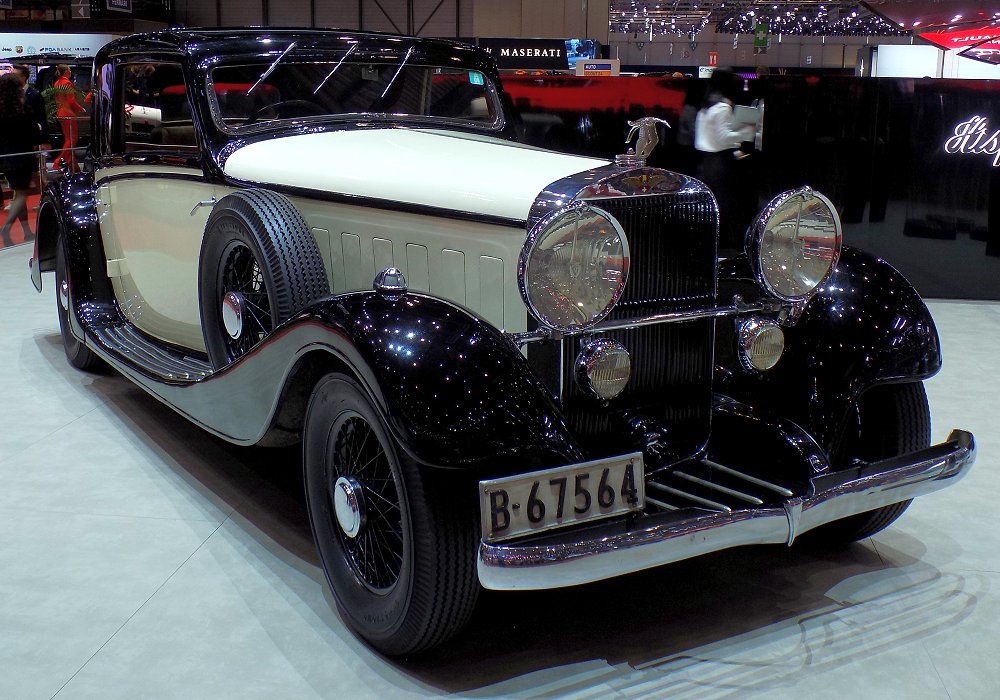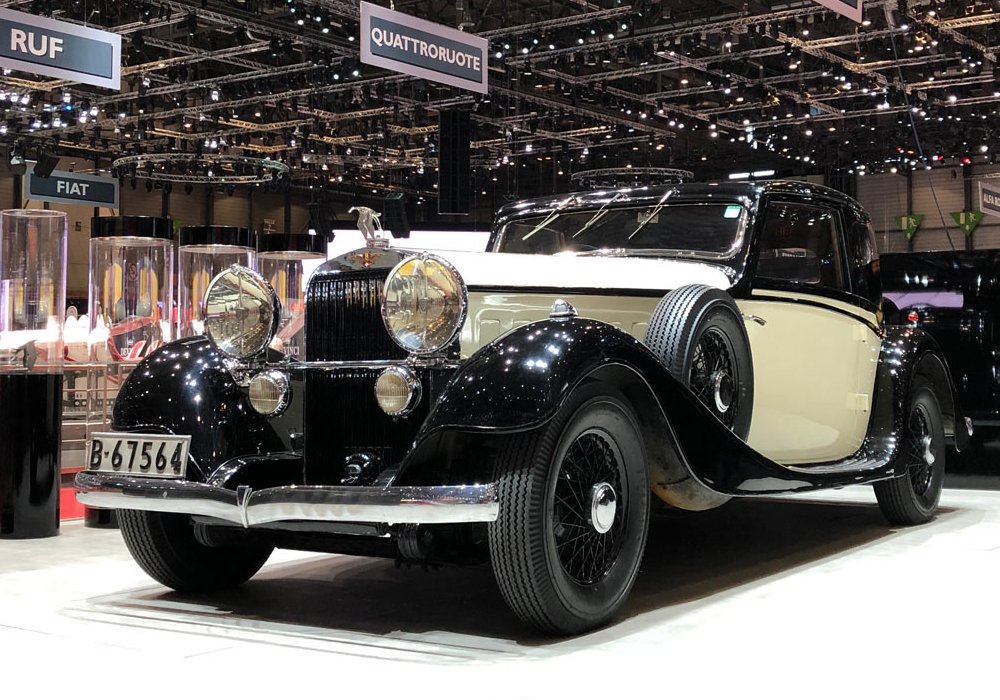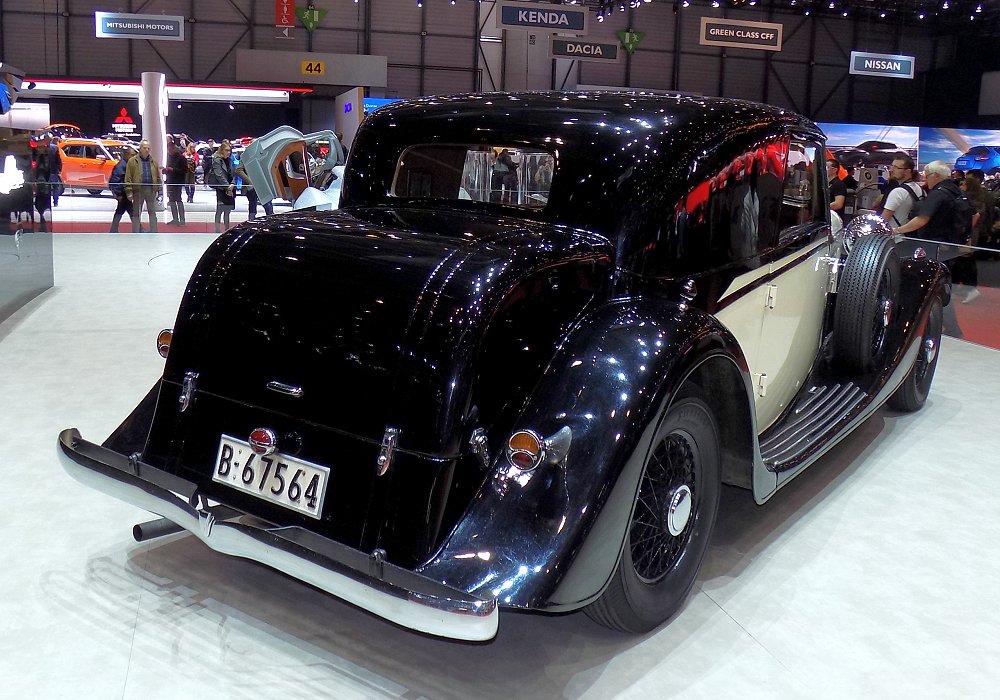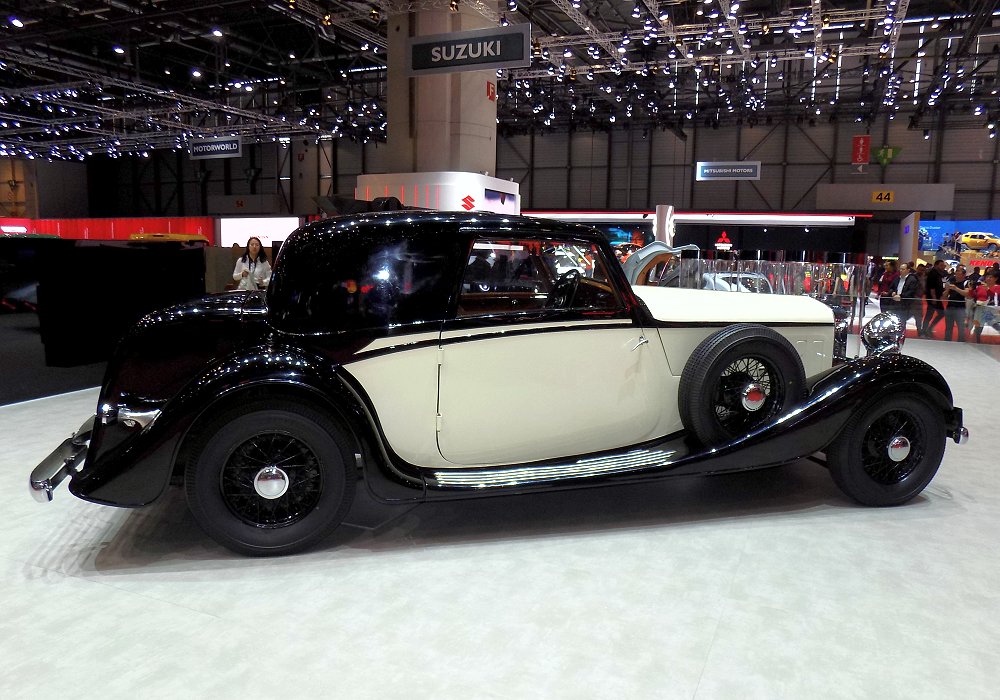Description
The Hispano-Suiza J12 was one of the most magnificent and technically accomplished automobiles of the prewar era—a masterpiece of engineering, refinement, and craftsmanship that epitomized the height of 1930s luxury motoring. Introduced in 1931, the J12 represented the ultimate expression of Hispano-Suiza’s philosophy: uncompromising mechanical excellence paired with bespoke artistry. It was a car built for kings, industrial magnates, and connoisseurs who sought not just transportation, but perfection.
The J12 was designed under the direction of Marc Birkigt, Hispano-Suiza’s brilliant Swiss-born chief engineer. Having already revolutionized both aviation and motoring with his aircraft engines and the renowned H6 series, Birkigt set out to create a car that would surpass anything else on the road. The centerpiece of his creation was the extraordinary V12 engine—an all-aluminum, 60-degree unit machined entirely from solid billets, a level of precision almost unimaginable even by modern standards. Initially displacing 9.4 litres and later expanded to 11.3 litres, the engine produced approximately 220 horsepower, delivered with the smoothness of a turbine. It was designed for silence, torque, and reliability, embodying Hispano-Suiza’s reputation as “the car that defies time.”
The J12’s engine was a direct descendant of Birkigt’s aircraft powerplants, which had powered Allied fighters during World War I. Its single overhead camshaft per bank and hemispherical combustion chambers reflected advanced aeronautical engineering, and its refinement was legendary—one demonstration famously involved balancing a coin on the idling engine without it falling over. The immense torque allowed the car to accelerate effortlessly from low speeds and maintain 160 km/h (100 mph) in near silence, a feat that only a few competitors, such as the Rolls-Royce Phantom II or Bugatti Type 46, could approach.
The chassis of the J12 was as remarkable as its engine. Built from high-strength steel, it provided superb rigidity and balance. Servo-assisted four-wheel brakes—an innovation Hispano-Suiza had pioneered a decade earlier—ensured unmatched control and stopping power for a car of such mass. The ride was exceptionally smooth, thanks to careful suspension tuning and meticulous attention to detail. The J12 offered both power and poise, capable of gliding through city traffic or devouring long continental journeys with effortless composure.
As with all Hispano-Suizas, the J12 was delivered as a rolling chassis to be clothed by the world’s finest coachbuilders. Each example was unique, reflecting the taste and social stature of its owner. French firms such as Saoutchik, Kellner, Vanvooren, and Million-Guiet, along with British houses like Gurney Nutting and Hooper, produced breathtaking bodies in configurations ranging from formal limousines and coupé chauffeurs to graceful cabriolets and sporting coupés. These designs were distinguished by their impeccable proportions, subtle ornamentation, and flawless craftsmanship.
Inside, the J12 embodied the finest luxury of its age. The interiors were handcrafted from the most exquisite materials—hand-stitched leathers, polished hardwoods, and finely machined metals. Every switch and lever operated with the precision of a fine instrument. The driver’s cockpit was functional yet elegant, while the rear compartment offered palatial comfort, often equipped with bespoke fittings such as folding tables, writing desks, vanity mirrors, and crystal accessories.
Driving a Hispano-Suiza J12 was an experience unlike any other. The V12 engine delivered immense, silent power with barely perceptible vibration. The servo-assisted brakes and perfectly weighted steering gave the driver confidence and control, while the car’s immense size and smoothness conveyed a sense of serene authority. It was equally suited to being chauffeured or driven personally—something rare among luxury cars of its time.
Production of the J12 continued until 1938, with only around 120 chassis built. Its immense cost—far exceeding that of a Rolls-Royce—ensured exclusivity, and its clientele included European royalty, industrialists, and heads of state. The outbreak of World War II ended Hispano-Suiza’s production of grand automobiles, marking the J12 as the company’s final masterpiece before it turned fully to aircraft and military manufacturing.
Today, the Hispano-Suiza J12 stands as one of the greatest achievements in automotive history. It represents the zenith of prewar luxury motoring, a perfect balance of engineering brilliance and aesthetic refinement. Each surviving example is a work of art—testament to an age when cars were built not for efficiency or economy, but for excellence. To this day, the J12 remains a symbol of quiet power, enduring craftsmanship, and the unmatched elegance of the golden age of the automobile.



